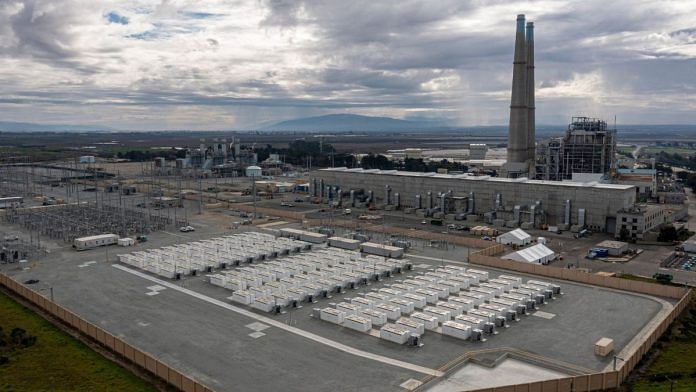The world is struggling with simultaneous energy and climate crisis. To solve the first could require undoing all the progress made toward greener power and cleaner air. But it doesn’t have to be that way.
Euphoria for electric cars — and the powerpacks that run them — has obscured a more immediate and distinct need: batteries to run homes and businesses, as countries across the world deal with the repercussions of an ongoing power crisis. Despite the worsening state of energy and rising electricity prices, existing technologies aren’t being put to use. Instead, everyone is just thinking about the steepening cost of generation, paralyzed by the thought of escalating bills and more frequent blackouts.
There’s a simple solution: Store the energy and use it when the need arises. As the market for EV batteries expands and evolves, large industrial-scale powerpacks — energy storage systems, or ESS — are being overlooked as a potential solution to this power crunch. The market for the former, for instance, is expected to grow to $500 billion over the next two decades, while that of ESS won’t even make it past $100 billion, according to Morgan Stanley estimates. The latter is what we need far more urgently.
EV excitement has, no doubt, pushed development of battery technology overall and therefore helped ESS along as well. However, it hasn’t been driven by active concerns about our energy needs.
ESS are typically large, stationary powerpacks that can store excess energy from grids and other sources for later use, or when demand is peaking. As renewable energy contribution to power supply increases across the globe, the ability to store it and use it when people or businesses need it will become more important.
What’s underappreciated about these systems is that they benefit from all the EV battery developments like better energy density and safety, but don’t have the same problems or constraints. One big issue is size, for instance. Electric car batteries need to be small, high-energy and safe. Its been difficult to get all three factors operational at the same time. But for ESS, size isn’t an issue since they don’t need to be housed in a moving vehicle. That reduces one variable.
In addition, factors that worry EV buyers about smaller batteries are different: Energy density doesn’t matter as much, nor does how far they need to take a vehicle, or the range. That’s key: this issue has driven manufacturers to push for other formulations that are expensive and tough to deploy commercially. What matters is charging cycles, battery life and frequency.
Viable options like lithium iron phosphate, or LFP, powerpacks, are underestimated. Life cycles and other metrics for stationary battery use are improving. Most materials used in this type are abundant, although prices have risen in recent months. They can operatefor several thousand cycles of charging and discharging.
All this means that existing technologies have come far enough to make ESS a reality — even for a few hours a day. Several manufacturers are already onto the imminent need for such systems, investing billions in building out these energy storage systems.
The world’s largest battery company, China’s Contemporary Amperex Technology Co., has been actively expanding its work in this area. It’s sold these products at six projects in Texas to an independent power producer.
The looming issue is upfront costs. Analysts often talk about how unviable these systems are, but in reality, there are too many unknowns to make accurate estimates on how steep industrial-scale energy storage projects will be. The running expenses will depend on improvements including the quality of products and the life cycle of powerpacks — and these have both come a long way. Bottom line is, the status quo isn’t sustainable — it’s already cracking, and it’s time to look for solutions.
But are governments and companies willing to put ESS to use and boost adoption? The smart move would be to provide incentives, tax cuts, or consumer awareness programs to push things along. Ultimately, the upfront costs need to be brought down and that requires talking about something less exciting than electric cars.
China, for instance, has been widely deploying LFP chemistry. As part of its goals to have 30 gigawatts of energy storage systems over the next three years, it plans to slash costs to help businesses adopt and deploy these systems. Notably, it will ensure energy security to maintain its global supply chain heft. That’s not been a consideration for many others.
A recent MIT study on energy storage noted that the current policy focus on short-term decarbonization goals has encouraged both public and private attention toward “relatively mature technologies.” That means markets and money haven’t pushed hard enough on new uses of storage and more effective energy utilization, since they continue to fly under the radar, set apart from mainstream policy.
Until they focus on the future, we should start worrying more about more blackouts and power shortages as climate change and extreme weather combine to put energy supplies at risk. –Bloomberg
Also read: How India’s power crisis is self-made & why we could face another crunch during the monsoon



